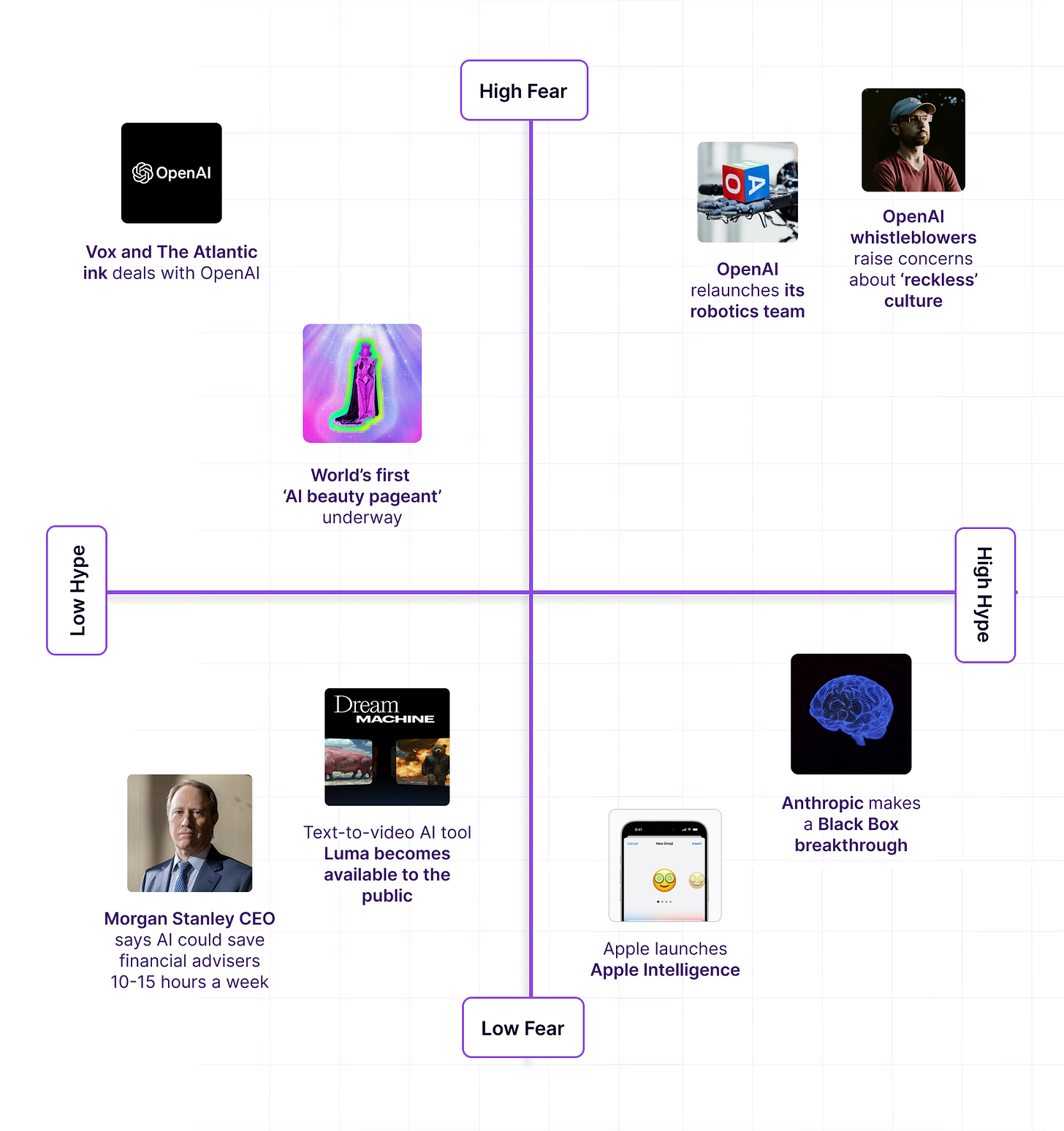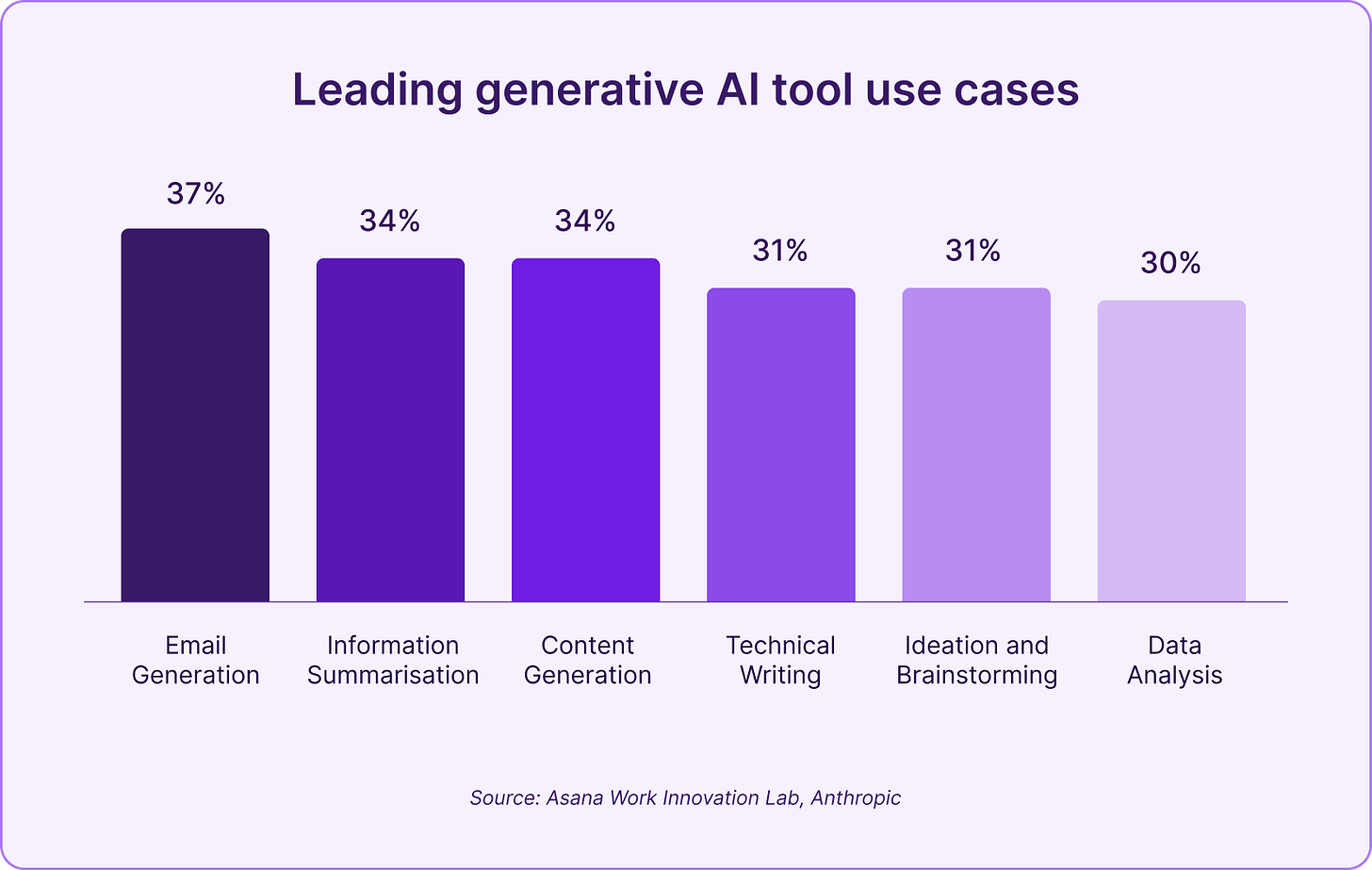Introducing Co-Creative
A new weekly newsletter exploring the intersection of human and AI creativity.
The future of content is human + AI
The future of content is human + AI. That’s the grandiose statement this newsletter is based on, but what does it mean?
As Head of Marketing at A.Team, I’ve spent the last two years figuring out how to leverage AI to give my team superpowers — not just to create more content but better stories that will cut through at a time when the internet feels like screaming into a hurricane. In early 2022, our first experiments were with tools like Midjourney (amazing), CapCut (cool), and Jasper (bleh), but then, of course, ChatGPT launched.
Since that fateful day 19 months ago, marketing leaders everywhere have faced intense pressure to master AI and spread those skills to their teams. I know I have. And I’ve learned a key lesson along the way: You can’t just use AI to scale the same mediocre crap you were doing before. We don’t need faster horses. We need a Ferrari.
At its best, generative AI is a tool to do creative work we could never achieve otherwise and automate the grunt work that eats up the day and keeps us from unleashing our storytelling superpowers. To paraphrase the latest viral LinkedIn meme — I don’t want AI to tell stories for me so I can do more administrative BS. I want it to do the administrative BS, so I have the time to tell great stories.
For us at A.Team, this has meant everything from building a sales enablement GPT that answers all the annoying questions our sales team asks us on Slack (“Do we have a case study about X?!”) to creating a Marvel-style product launch video that would have cost $50K just a few years ago.
This is also what drew me to Pepper Content as an advisor — my team uses it to take so much grunt work out of SEO and content research, optimization, and analytics, which allows us to reinvest that time in truly meaningful work.
This is what we want to explore in Co-Creative: How do we leverage AI not to replace our human creativity but to supercharge it? How do we evolve from ad hoc use cases to intuitive workflows that allow our teams to create content that breaks through that hurricane of noise and stands out in a sea of sameness?
Thanks for being here. We hope you join us on this journey.
AI can be understood across two dimensions: Hype (everyone is talking about this!) and Fear (is this going to kill my career? Will this kill EVERYONE?). With that, we’re introducing the AI Hype Matrix — mapping the latest AI news stories across an unimpeachable scale of Hype and Fear.
Recent highlights include Apple's latest foray into integrating AI into its ecosystem and Luma AI’s public release of a snazzy new text-to-video tool. OpenAI is quietly relaunching its robotics team while whistleblowers ring alarm bells about the company’s “culture of recklessness.” Plus, a beauty pageant rife with the uncanny valley, AI in finance and publishing, and Anthropic’s breakthrough in peeking under the hood of how LLMs come up with their outputs.
How are people using AI at work?
From suggesting the “sweet spot” of exclamation points in an email to summarizing expense reports, AI helps professionals unlock new productivity levels. Recent data from Anthropic breaks down the most common ways people use AI at work. Topping the list: email generation, information summarization, and content generation. Image source.
How CMOs are thinking about AI
Lately, we’ve been on a Pepper Content roadshow, hosting a series of CMO dinners in San Francisco and New York to learn how expert marketers are really using AI.
Here are some key learnings:
Top CMOs in financial services have a common concern: brand safety. Half the job is maintaining their reputation at a Fortune 100 bank — not just growing the pie. Every piece of content needs a detailed audit trail. AI hallucinations still present a massive risk.
A common consensus is emerging around use cases: AI is an incredible resource for repurposing content — say, turning an e-book into a LinkedIn carousel — or drafting formulaic pieces like product releases. But when it comes to true thought leadership, a human should handle the first draft.
Google’s new AI Overviews feature is the boogeyman in the room. Organizations that aren’t thinking about how to incorporate LLMO (Large Language Model Optimization) into their SEO strategy risk falling behind.
Be on the lookout for an invite as these dinners ramp up again once everyone gets back from the Hamptons in the fall.
Goldcast Content Lab
If your team spent weeks on a webinar series that only 34 people attended, here’s a way to get more mileage out of those recordings — and any other video assets gathering dust. This tool is still in its adolescent phase, but it has serious potential to help marketers save time creating derivative assets from existing videos. Find a demo of Goldcast here.
A sexy content strategy for an unsexy product category
Some products are tougher to market than others (think industrial equipment, fertilizer, or toilet plungers). For this thought experiment, pick an unglamorous product or service and get creative by repositioning it as a must-buy item. The exercise showcases how AI can help marketers challenge assumptions, think outside the box, and hone their persuasive writing skills.
Suggested prompt text:
"Propose an innovative content strategy that can reframe the unglamorous [X product] as a must-have lifestyle item."
















